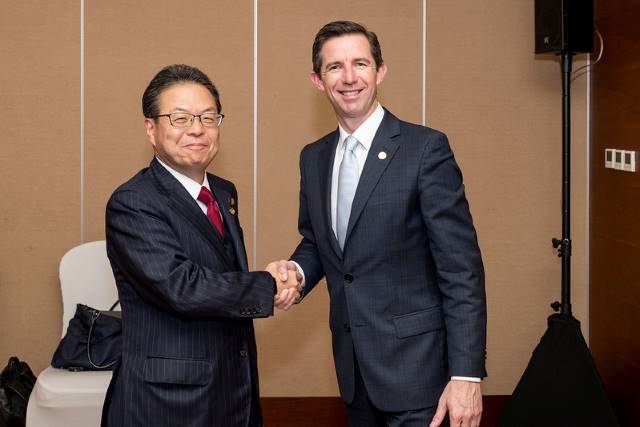How the RCEP Will Benefit Asia’s Impoverished
 On November 15, 2020, 15 Asia-Pacific countries signed The Regional Comprehensive Economic Partnership (RCEP). The RCEP is a free trade agreement (FTA) establishing new relationships in the global economy. The 15 countries that signed the trade deal account for 30% of all global gross domestic product and impact more than two billion people. The new economic opportunities that will emerge from the RCEP will benefit Asia’s impoverished.
On November 15, 2020, 15 Asia-Pacific countries signed The Regional Comprehensive Economic Partnership (RCEP). The RCEP is a free trade agreement (FTA) establishing new relationships in the global economy. The 15 countries that signed the trade deal account for 30% of all global gross domestic product and impact more than two billion people. The new economic opportunities that will emerge from the RCEP will benefit Asia’s impoverished.
The Introduction of the RCEP
In 2011, the Association of Southeast Asian Nations (ASEAN) Summit introduced the RCEP. Simultaneously, another free trade agreement, the Trans-Pacific Partnership (TPP), was undergoing development. The TPP’s existence failed to come to fruition when former U.S. president, Donald Trump, removed the U.S. from negotiations in 2017. Consequently, this led many Asia-Pacific nations to negotiate with each other to make the RCEP become a reality. The ASEAN Secretariat has declared the RCEP as an accelerator for employment and market opportunities. The RCEP has been seen as a response to the absence of U.S. economic involvement and a form of stimulating the economy due to the COVID-19 pandemic.
RCEP Regulations
The RCEP has a set of new regulations that made it enticing for many nations to join. As much as 90% of tariffs will be eliminated between participating countries. Moreover, the RCEP will institute common rules for e-commerce and intellectual property. The trade deal will also include high-income, middle-income and low-income nations.
RCEP Benefits for the Philippines
Allan Gepty, a lead negotiator from the Philippines, assures that the RCEP will benefit the low-income country in many ways. The RCEP will mean more investments in sectors such as e-commerce, manufacturing, research and development, financial services and information technology. Moreover, the trade secretary, Ramon Lopez, also believes the Philippines will benefit because the RCEP will bring job opportunities. In a country where the poverty rate stood at 23.3% in 2015, the RCEP will benefit Asia’s impoverished.
Supporting Myanmar’s Economic Growth
According to the World Bank, a way to promote the reduction of poverty in Myanmar is supporting the private sector to create job opportunities. Furthermore, vice president of the Asian Investment Bank (AIIB), Joachim von Amsberg, also believes the RCEP will benefit Asia’s impoverished. He sees the RCEP as a way to grant small and medium-sized enterprises (SMEs) more access to markets, thus creating more job growth and promoting infrastructure development.
Industries Impacted by the RCEP
Many other nations will benefit from the RCEP as well. Textile and apparel (T&A) is a key sector under the RCEP. While countries such as Australia and Japan have high labor and production costs, many others do not. The RCEP will increase investment to lower-cost and less skilled countries such as Myanmar, Cambodia and Laos. The trade deal will also impact the country of Vietnam. Vietnam will benefit from its exports which include footwear, automobiles and telecommunications. Furthermore, Vietnam is could also benefit from the exporting of agriculture and fisheries products. Malaysia anticipates greater opportunities in travel, tourism and the aviation industry. Malaysia is expected to increase its GDP between 0.8% and 1.7% through the RCEP.
The Potential for Poverty Reduction
The RCEP is the biggest trade deal in Asia-Pacific’s history. The trade deal is predicted to add US$186 billion to the global economy and 0.2% to the gross domestic product of each participating nation. Also, free trade agreements allow emerging economies to become more sustainable. According to the World Bank, poverty is reduced by boosting international trade. Global trade expands the number of quality jobs and encourages economic growth. The RCEP came at a time when there are future uncertainties due to the COVID-19 pandemic and its economic impacts. Many anticipate that the RCEP will benefit Asia’s impoverished.
– Andy Calderon
Photo: Flickr
